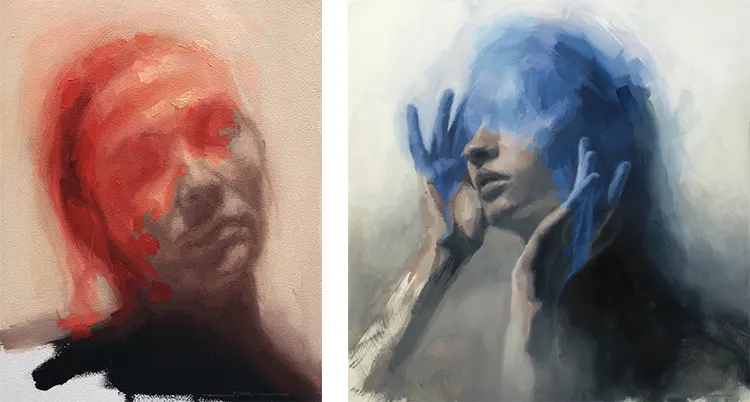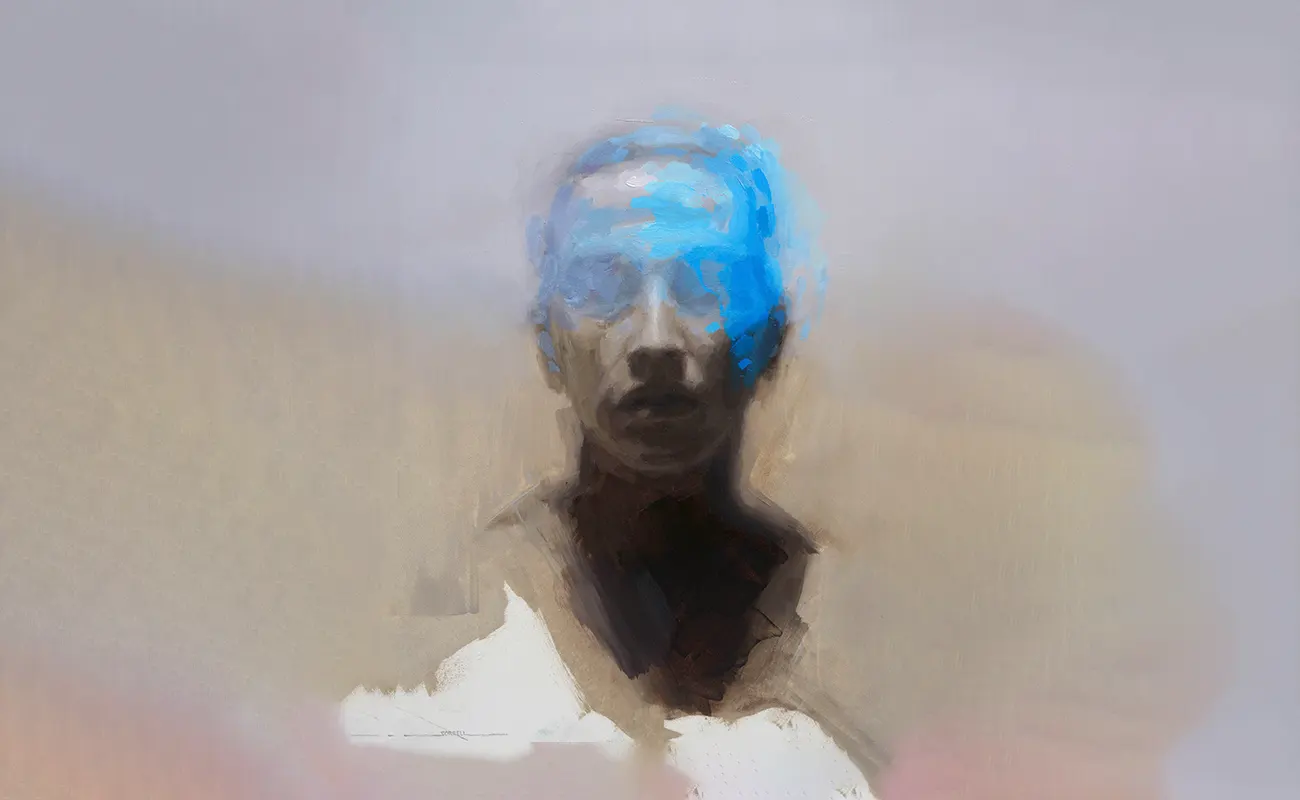“Perhaps it was fate that this is my story to tell.”
Growing Up Amid Art: Sorrell’s Early Years and Influence
Josh Sorrell, a lifelong resident of Iowa, now operates from his artistic sanctuary in downtown Des Moines. His upbringing in peaceful Spencer, Iowa, shared with his mother and brother, was tinged with melancholy due to his parents’ divorce when he was only three. This emotional turbulence shaped a fragile foundation that still influences him. As a youngster, Sorrell turned to introspection, a quest for tranquility that serves him well today, aiding the creation of his exquisite oil paintings.
Creative expression has always held a central position in Sorrell’s life. As a child, not only did he revel in the act of drawing, but he also found joy in crafting wooden objects in his garage, a gift of tools from his grandfather nurturing this early interest. As a teenager, Sorrell discovered his uncanny ability to draw with stunning accuracy, capturing the minutiae of life in his renderings. Despite his artistic inclinations, Sorrell’s family, deeply embedded in more conventional professions, encouraged him towards a more secure career trajectory. This led to his 14-year stint as an architectural drafter and illustrator, all the while continuing to hone his drawing and painting skills in his personal time.
However, life-altering circumstances precipitated a shift in Sorrell’s perspective. The devastating diagnosis of stage-four cancer for a close friend became an alarmingly poignant reminder of life’s ephemeral nature. Barely a month later, Sorrell chose to relinquish his former occupation, embracing his true calling as a full-time artist. Since that critical juncture eight years ago, he has been cultivating his distinctive voice in the realm of figurative art.
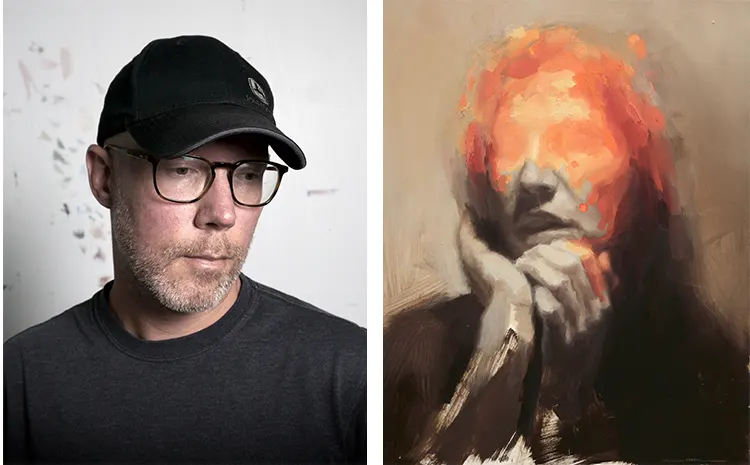
The Making of an Artist: Sorrell’s Unique Artistic Approach
Josh Sorrell’s artistic method is an elaborate fusion of impressionism, expressionism, surrealism, and abstraction. His work probes into self-reflective topics of self-realization and transformation. To craft this narrative, Sorrell uses solitary figures caught in tumultuous environments. These scenarios are frequently highlighted by vibrant colors that seem to impinge upon the figure in a way comparable to an invasive presence. These lively, abstract forms are emblematic of the relentless attempts of the world to mold our beliefs, guiding the subject towards an inevitable decision point. It is in these instances that the viewer can observe the transformative change in the subject’s identity.
Sorrell’s workshop requirements go beyond oil paint, gessoed wood panels, and brushes; music is a pivotal factor in his creative process. The tempo of his work is harmonized with the rhythm of his selected melodies. Slower, more lyrical songs often inspire meticulous, deliberate brush strokes, whereas upbeat alternative music prompts a more aggressive style in his artistic impressions. Once immersed in his creative haven with his phone on silent, door shut, and music filling the room, Sorrell finds external distractions fading, giving way for his creative process to thrive unfettered from the moment he begins his painting.
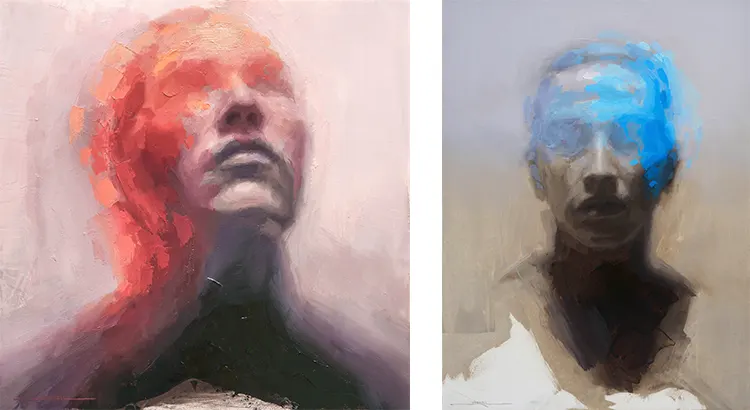
Inspiration Uncovered: The Artists and Moments that Shaped Sorrell
Josh Sorrell’s artistic inspiration is richly varied, drawing heavily from a multitude of modern representational artists who present their work on popular social media platforms. A close analysis of Sorrell’s paintings reveals the pervasive influence of artists such as Schalk van der Merwe and Kai Samuels-Davis, reflected in his dynamic compositions. The vibrant color choices adorning Sorrell’s canvas bear striking similarities to those favored by artists like David Cheifetz and Taeil Kim. Furthermore, the intricate brush and knife strokes seen throughout his works appear to be subtly guided by the styles of Alex Kanevsky and Henrik Uldalen.
A significant turning point in Sorrell’s artistic evolution occurred nearly 15 years ago while he was employed at an architectural firm. In the midst of clearing out a cluttered storage room, crammed with outdated construction documents and various old office equipment, slated for demolition, Sorrell discovered an aged but fascinating print by Gustav Klimt, entitled “Hope II”. Compelled to give the neglected piece a new lease on life, he took it home and mounted it on his wall.
The striking imagery captured in Klimt’s “Hope II” had a profound effect on Sorrell. Initially, the composition’s angelic figure, seemingly suspended above praying individuals, dominates the viewer’s attention. However, upon closer inspection, Sorrell discerned a human skull, unsettlingly juxtaposed near the figure’s pregnant womb. This intricate interplay of imagery left Sorrell in a state of emotional disarray. The vibrant patterns invoked a sense of positivity, yet the skull and the melancholic expressions on each face added layers of complexity to the narrative. This paradoxical amalgamation of emotions served as a catalyst for Sorrell’s exploration of imbuing his own artwork with a similar depth of layered emotion.
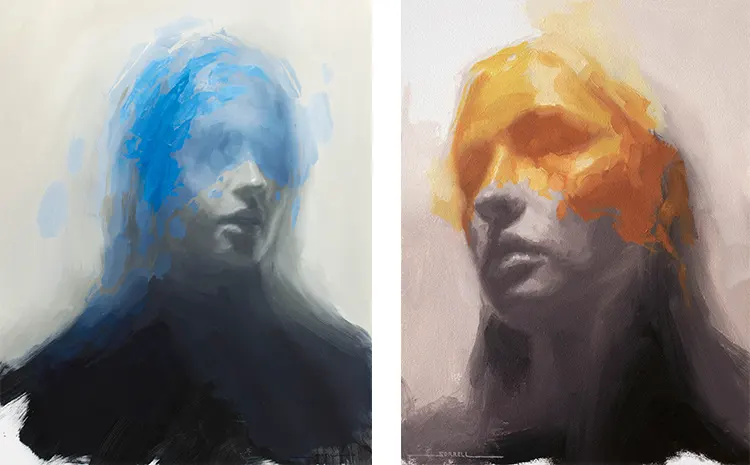
Media and Metaphor: Sorrell’s Exploration of Oil and Color
During his formative years as an artist, Josh Sorrell initially found himself drawn to graphite drawing, subsequently graduating to acrylic painting. However, the dry-time constraints inherent to the medium proved somewhat vexing for him, prompting a pivotal exploration into the world of oil paints. An immediate affinity was formed, primarily due to the flexibility oil offers, specifically its propensity for wet-on-wet application—a technique that harmoniously aligned with Sorrell’s proclivity for figurative compositions. Despite experimenting with charcoal and watercolor, the allure of oil remains undiminished, firmly establishing itself as his preferred artistic medium.
Almost a decade ago, Sorrell was visited by an intriguing concept, imagining color as an autonomous entity, operating somewhat akin to a virus. Initially, this idea centered around envisioning color as an independent player that interacts dynamically with the subject of the artwork. Over time, Sorrell has been diligently nurturing this concept, allowing it to progressively inform and characterize his contemporary oeuvre. Each completed piece is perceived as a reflective journey, offering insights into the artist’s past and present, making for an evocative body of work.
His work has found resonance among audiences, striking a chord on an emotional level due to the inherent relatability of the narratives Sorrell crafts. This captivating impact leaves observers seeing fragments of their own lives mirrored in his art. Moving forward, Sorrell aspires to continue innovating within this conceptual framework, always in pursuit of novel ways to facilitate its evolution.
